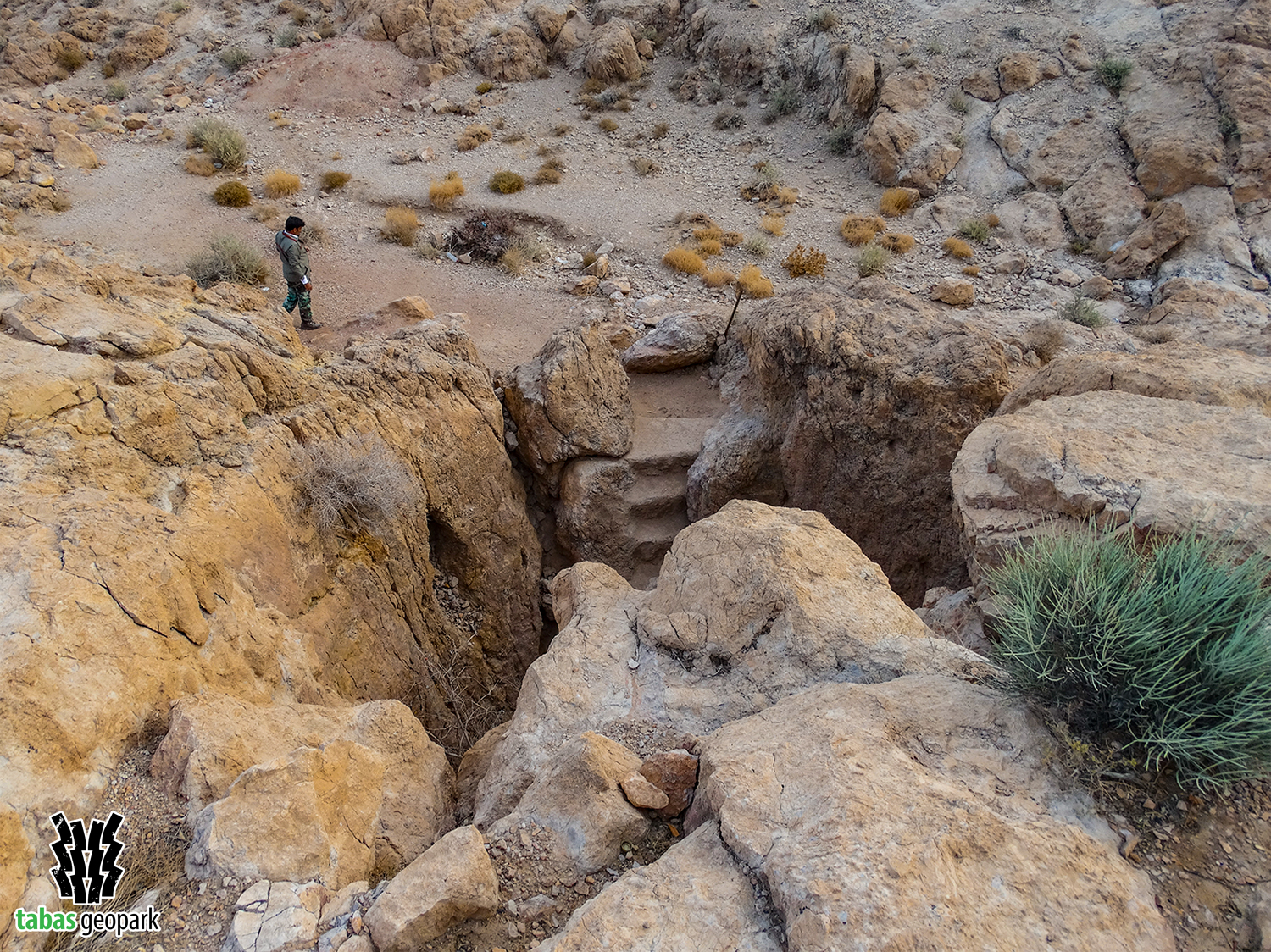Doline or sinkhole is one of the most prominent forms in karst areas, formed due to various factors and processes. The small to medium closed karst holes are called doline, regardless of their origin and climate. As the early caves expand from the water supply points, they join an older cave along the path. When the new and the old cave are connected, the amount of water flowing through the rocks is so high that sufficient amount of rock moves and collapses, leading to the formation of a hole the size of a doline. In fact, the collapse of the roof of underground caves leads to the formation of holes in the surface of the earth, which are called dolines and can be divided into solution and cover collapse types. Pirhājāt Doline is one of the typical examples of collapse dolines in Tabas Geopark, formed in limestone and dolomite rocks around 228-245 million years ago (Middle Triassic period). This doline indicates the development of dissolution processes and the formation of underground caves developed in limestone and dolomitic rocks of Pirhājāt village.
– The scientific resources are available in the management of Tabas Geopark.
The use of this article is unrestricted by mentioning the source.

